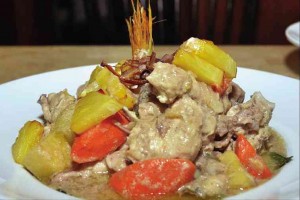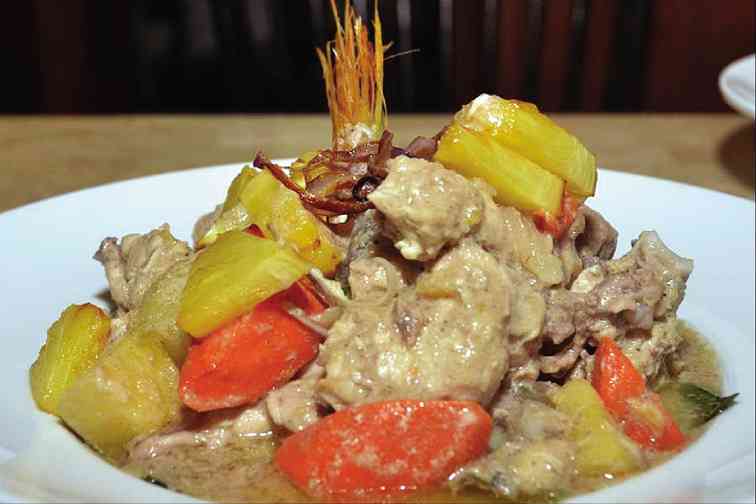
One of the richest provinces in the Southern Luzon region, Batangas is known for its cattle ranches, its pineapple and coconut plantations, and vast hectares of sugar plantations. Because it’s along the coastline, it has access not only to beautiful beaches but also to the harvests of the sea.
As a result, Batangas’ cuisine is rich and varied. Among the dishes it’s known for is beef bulalo, a hearty soup of beef shanks and beef bone marrow patiently simmered to tenderness. Maliputo, found in the waters of Taal Lake, is a highly prized fish because of its delicate flavor. And with sugar being a major product, specialties of the province include delicacies such as suman made with panotsa.
These and other Batangas dishes will be part of the lunch and dinner buffet of Hotel InterContinental’s Café Jeepney until September 30. The crabs cooked in coconut milk is a must-try. For this dish, Hotel InterCon uses the special crabs found in the brackish waters of the river in Nasugbu. Because the river is near the sea, its water is salty, giving the crabs a salty-sweet flavor, according to Batangueño chefs Tats Azarcon Jr. and Randy Capule, who are assisting the Intercon chefs in preparing the buffet.
Here’s the chefs’ recipe for a dish that makes good use of Batangas’ abundant coconut and pineapple harvests: pininyahang manok, or chicken with pineapple.
Simmered in thick coconut milk that comes from the first pressing of coconut meat, the chicken is enhanced by the flavor of sweet, fresh chunks of pineapple. This dish is best served as soon as it’s cooked.
(The cuisine of Batangas will be part of Café Jeepney’s lunch and dinner buffet until Sept. 30. For reservations, call tel. 7937000.)
Pininyahang Manok
- 1 ½ kg chicken
- 2 tbsp cooking oil
- onion, chopped
- 4 cloves garlic, chopped
- carrot, sliced into rounds or wedges
- potatoes, cut into cubes or wedges (see tips)
- whole fresh pineapple, peeled and cut into chunks (see tips)
- Salt and pepper, to taste
- c thick coconut milk (kakang gata)
- c chicken stock or water (only if needed)
- red bell pepper, sliced into thick strips
- green bell pepper, sliced into thick strips
1. Slice the chicken into serving pieces. In a large, deep casserole, heat the cooking oil to medium, then sauté the onions and garlic. Add the chicken and cook, stirring occasionally so the chicken browns lightly on all sides, about five to 10 minutes. Add the carrots, potatoes and pineapples. Season with the salt and pepper.
2. Pour in the coconut milk. Turn up heat. When the liquid boils, lower the heat to a simmer. Let simmer until the chicken is fully cooked and the vegetables are tender, about 15 minutes.
3. If the liquid seems too thick, add the chicken stock or water as needed. Stir in the bell peppers. Simmer for two to three more minutes. Adjust seasonings to taste. Serve with rice.
Thick coconut milk or kakang gata is the liquid from the first pressing or first squeezing of coconut meat. You can use freshly squeezed coconut milk or the canned variety. Usually, cans of thick coconut milk are labeled coconut cream.
When cooked, the potatoes and the pineapples look similar because of their yellowish color. So diners will know which one is which, cut them into dissimilar pieces. For example, you can cut the potatoes into scalloped wedges and the pineapple into triangular chunks.
When adding water or chicken stock to the simmering chicken, stir it well into the mixture so the liquids blend evenly. Add only as little as possible so as not to dilute the coconut milk.
Instead of a whole chicken that’s cut up, you can use slices of your favorite parts, e.g., chicken legs, wings or thighs, etc.
For more tips, recipes and stories, visit author’s blog www.normachikiamco.com, and Facebook fan page www.facebook.com/normachikiamco. Follow on Twitter @NormaChikiamco.












































